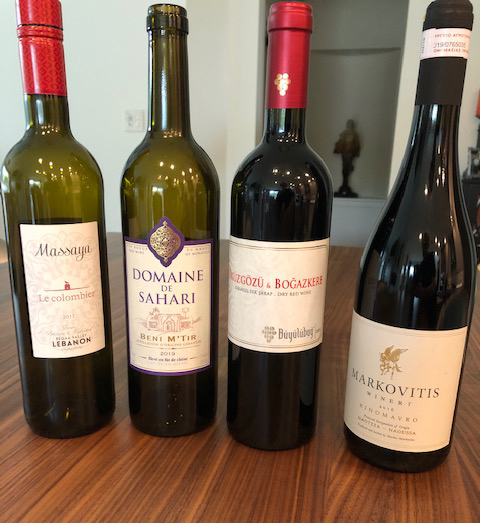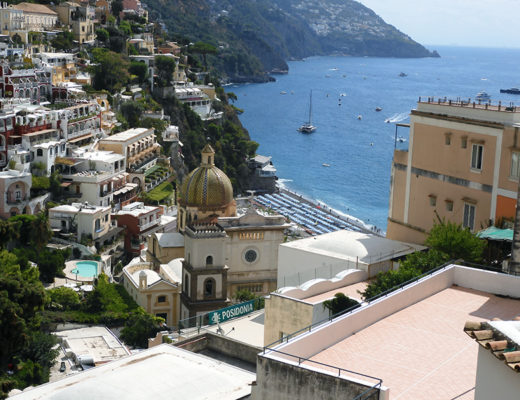Morocco has been on our short list for years. A friend from work had lived there for two years during the deployment one of the first satellite telephone systems years ago. He had described it as one of the most fascinating places he’d ever lived. He was originally from Poland and had lived all over the world, so I always saw his interest in the county as intriguing.
On a recent trip to our favorite family-owned wine store, Off the Vine, on Main Street in Grapevine, Texas, Holly, the owner called my attention to a wine she had recently tried from Morocco: Domaine de Sahari, Beni M’Tir 2019. Having worked in the Middle East and having tried many of their wines, even though it is not possible to purchase wine in most of those countries outside western hotels, and in some countries not even there, I decided to buy a bottle. Just one. Most of the wines I’ve tried from this region have been good, with differing flavor notes. But I’ve also tried a few that have been relegated to ‘cooking wine’ early.
When I brought home my find, along with a couple others we will discuss later, we decided to cook a Moroccan meal to have with the wine. Searching through recipes, we found Moroccan Chicken and Lentils in Cooking Light Annual Recipes of 2005 on page 208. We also found in the Best Ever Book of Bread, on page 356, Moroccan KSRA.
The recipe for Moroccan Chicken and Lentils was interesting because it is served over basmati rice, combining the lentils with that grain, which gives it an unusual texture. The main spices are coriander, cumin, cinnamon, red pepper and garlic. Adding golden raisins and almonds add crunchiness.
Serving with KSRA bread provides a different contrast than I’ve tasted recently since virtual international travel has become more commonplace. The KRSA calls for semolina flour mixed with wheat flour, aniseed, although we substituted fennel seeds, and a small amount of sugar. This bread offset the unusual aspects of the lentils and spices creating a mouthful of uncommon contrasts.
The wine is a blend of Cinsault and Grenache, a different combination than commonly found, creating a different set of flavor notes. The winemaker’s notes describe it as “Pale pink color. Aromas of fresh fruits and white flowers, with a hint of spice. The same flavors come across the palate, with the addition of melon and peach. Rich, rounded and full-bodied.”
The conversation over the meal led us to look forward to the day when we will be able to visit Marrakesh, Fez and Casablanca, likely combined with a return visit to the Spanish sun coast, no so far away extending from Malaga east to La Herradura and beyond.

While visiting with Holly at Off the Vine, I also picked up three other bottles from the Middle East region: Lebanon, Turkey and Greece. While we have never visited Lebanon, on one business trip to Abu Dhabi, I was able to find Lebanese wine at one of the Western hotels and found it to be very good. Holly had Massaya Le Colombier 2017 from the BeQaa Valley. I did not realize this until I purchased the wine that it also has Cinsault and Grenache Noir grapes as the Moroccan wine, but also blends in Syrah and Tempranillo resulting is a different bouquet and feel in the mouth. The winemaker notes are spare referring only to the flavor of fresh ripe raspberries on the nose and plush red fruits on the palate. It is an unoaked blend for those who favor a fresher taste.
One of our favorite trips (there have been so many) was to Turkey where we were surprised to learn that more wine is produced than many of the European countries we think of as major wine producers. One of the most daunting things about Turkish wine is being able to read the label and know what you’re getting. We bought a Buyulubag 2015 dry red wine. It is a blend of Okuzgozu and Bogazkere which is printed prominently on the label. Knowing nothing of these grapes I consulted the description from the Potomacwines.com website: “Powerful aromatic bouquet dominated by aniseed. Grinded fresh. Whole Black peppercorn and prune. Long finish with exotic spices. Strong texture.” The bottle indicates it is produced on the island of Avsa, which Potomac Wines describes as being located in the Marmara Sea and has a history of viticulture and wine making since the 1800s. The island has sandy -loam soil. We will be making a special Turkish dinner soon and will pair a Turkish wine at that time. Who knows, it may be another bottle of Okuzgozu and Bogazkere.
The final bottle was from Greece. I know a lot of people who like Greek food, but only a few specifically pair Greek wine with it. While we have had Santorini wines in the past, mostly white, in this case we bought a red: Xinomavro from Markovitis Winery (2016). The Winemaker states they have been producing a Xinomavro since 1972. The tasting notes are for a robust, deep red wine with a rich bouquet, exhibiting hints of dried fig and red currant accompanied by olive and tomato aromas. It has a full-bodied character with firm tannins and broad palate of flavors.
As you can see, this region is full of surprises, not only in the spices and ingredients found in the food, but also the wide range of how the wines express themselves, on the nose, in the mouth and the overall flavors you can discover. The next time you think of where would you like to visit, pick up a bottle from that country, hunt through old recipes and enjoy a preview of your next trip to a fascinating and surprising part of the world.




